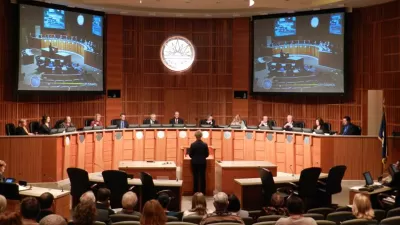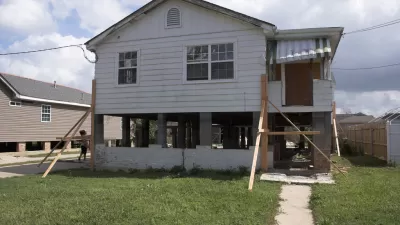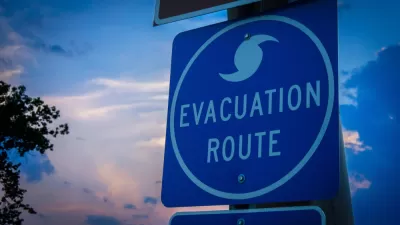Thanks to Planetizen for asking me to participate in “Planetizen Interchange” with such a distinguished group. This is my first entry so to let you know a bit about me, I live in New Orleans, LA. I was displaced for 10 months to Houston, TX after Katrina destroyed my house, but I am back in New Orleans where I am a planning, zoning and land use consultant.
Thanks to Planetizen for asking me to participate in "Planetizen Interchange" with such a distinguished group. This is my first entry so to let you know a bit about me, I live in New Orleans, LA. I was displaced for 10 months to Houston, TX after Katrina destroyed my house, but I am back in New Orleans where I am a planning, zoning and land use consultant. I am also Chairman of the New Orleans City Planning Commission. To say the least, this is an interesting time to be a planner in New Orleans.
The big planning issue, maybe the only planning issue, in metro New Orleans these days is recovery after the devastation of Hurricane Katrina in August 2005. After 18 months, much of the City is still devastated – devastation that pictures and television news stories can't begin to accurately portray. By most estimates, less than half of the City's pre-Katrina population has returned. The recovery planning process has been extremely long and is a multi-headed beast. A "Citywide" or "Unified" plan, sponsored by the Rockefeller Foundation and others, is before the City Planning Commission for public hearings and a recommendation to the Council. That plan was to put together the goals, recommendations and recovery projects of several other processes and studies into one "unified" plan. A giant, maybe impossible, task. The plan has been criticized by some as fluff, praised by others because of the extraordinarily extensive public participation process.
There are many issues being debated here. Just to pick one for discussion, what is the balance between what the public wants and what professional planning analysis recommends, especially when the two are at odds? Is there a way to find a middle ground?

Alabama: Trump Terminates Settlements for Black Communities Harmed By Raw Sewage
Trump deemed the landmark civil rights agreement “illegal DEI and environmental justice policy.”

Planetizen Federal Action Tracker
A weekly monitor of how Trump’s orders and actions are impacting planners and planning in America.

The 120 Year Old Tiny Home Villages That Sheltered San Francisco’s Earthquake Refugees
More than a century ago, San Francisco mobilized to house thousands of residents displaced by the 1906 earthquake. Could their strategy offer a model for the present?

In Both Crashes and Crime, Public Transportation is Far Safer than Driving
Contrary to popular assumptions, public transportation has far lower crash and crime rates than automobile travel. For safer communities, improve and encourage transit travel.

Report: Zoning Reforms Should Complement Nashville’s Ambitious Transit Plan
Without reform, restrictive zoning codes will limit the impact of the city’s planned transit expansion and could exclude some of the residents who depend on transit the most.

Judge Orders Release of Frozen IRA, IIJA Funding
The decision is a victory for environmental groups who charged that freezing funds for critical infrastructure and disaster response programs caused “real and irreparable harm” to communities.
Urban Design for Planners 1: Software Tools
This six-course series explores essential urban design concepts using open source software and equips planners with the tools they need to participate fully in the urban design process.
Planning for Universal Design
Learn the tools for implementing Universal Design in planning regulations.
Clanton & Associates, Inc.
Jessamine County Fiscal Court
Institute for Housing and Urban Development Studies (IHS)
City of Grandview
Harvard GSD Executive Education
Toledo-Lucas County Plan Commissions
Salt Lake City
NYU Wagner Graduate School of Public Service





























